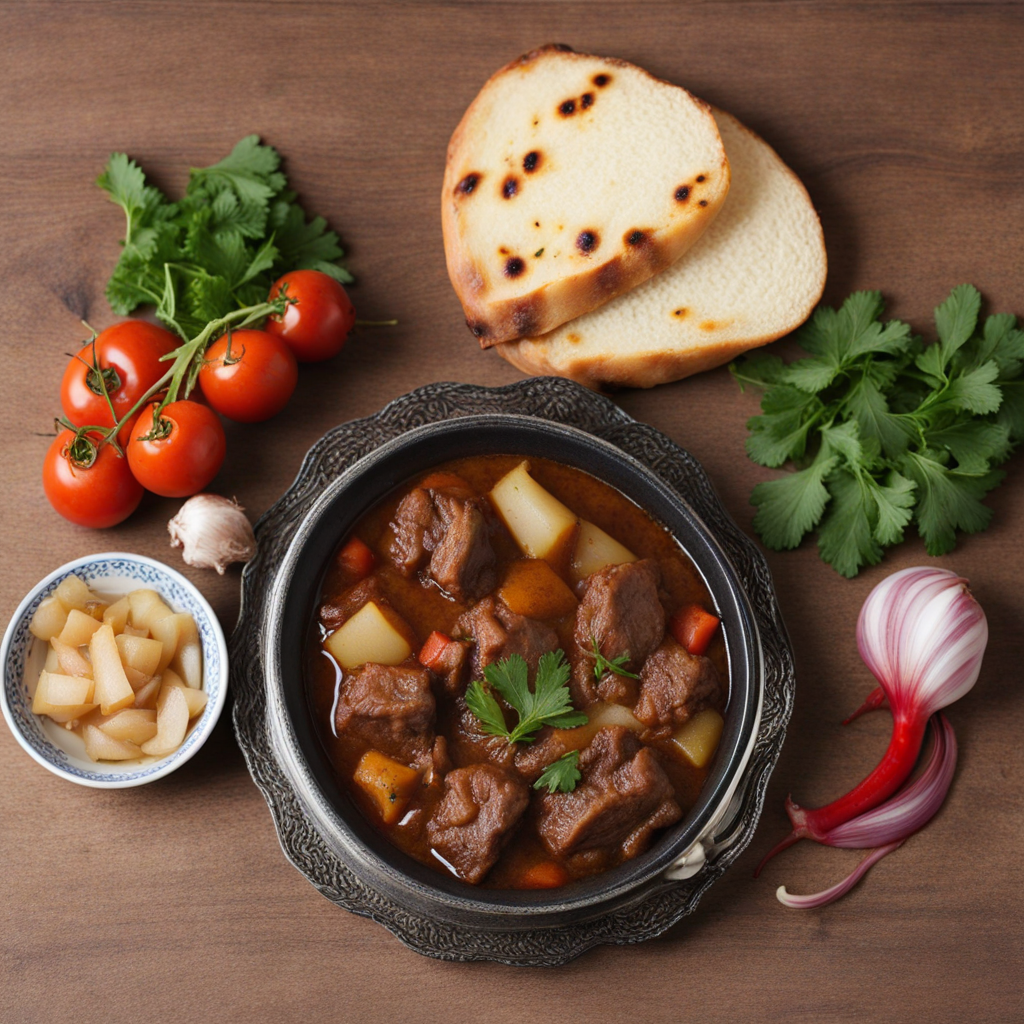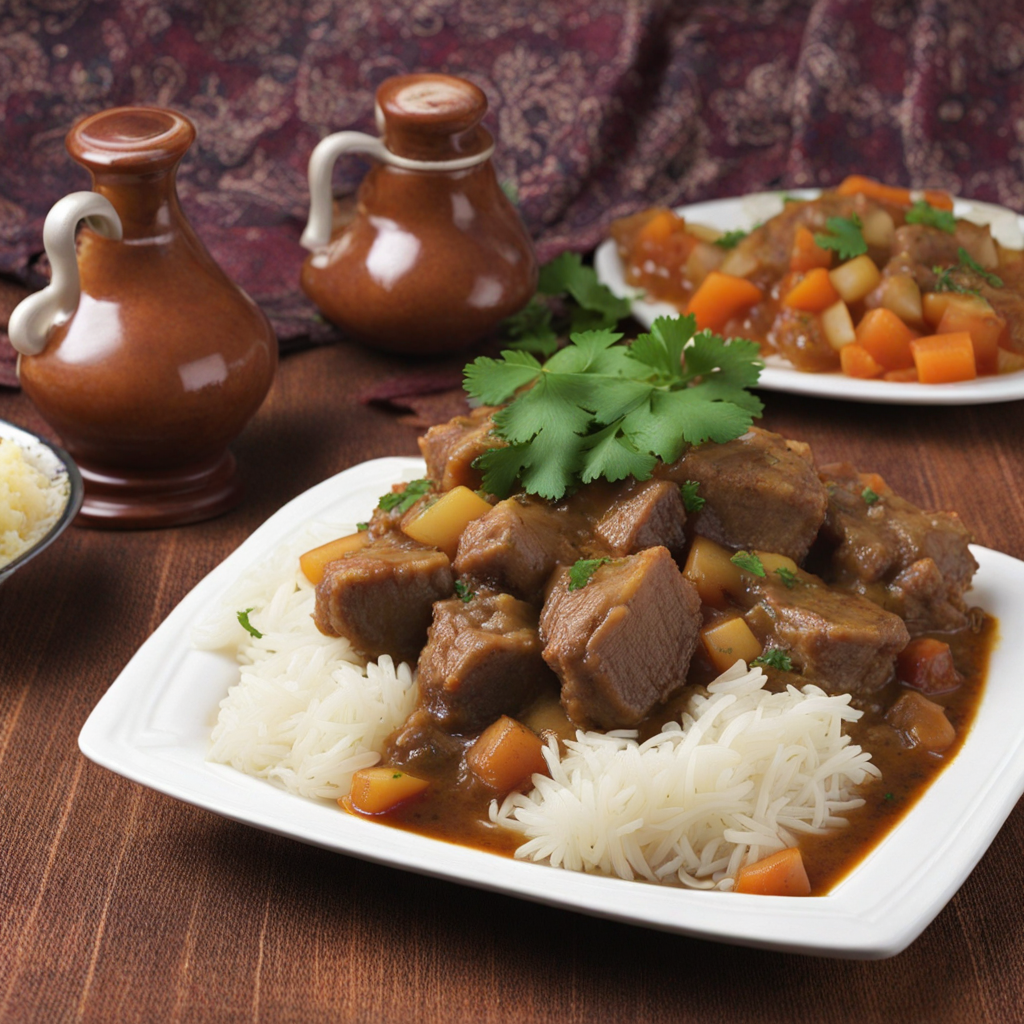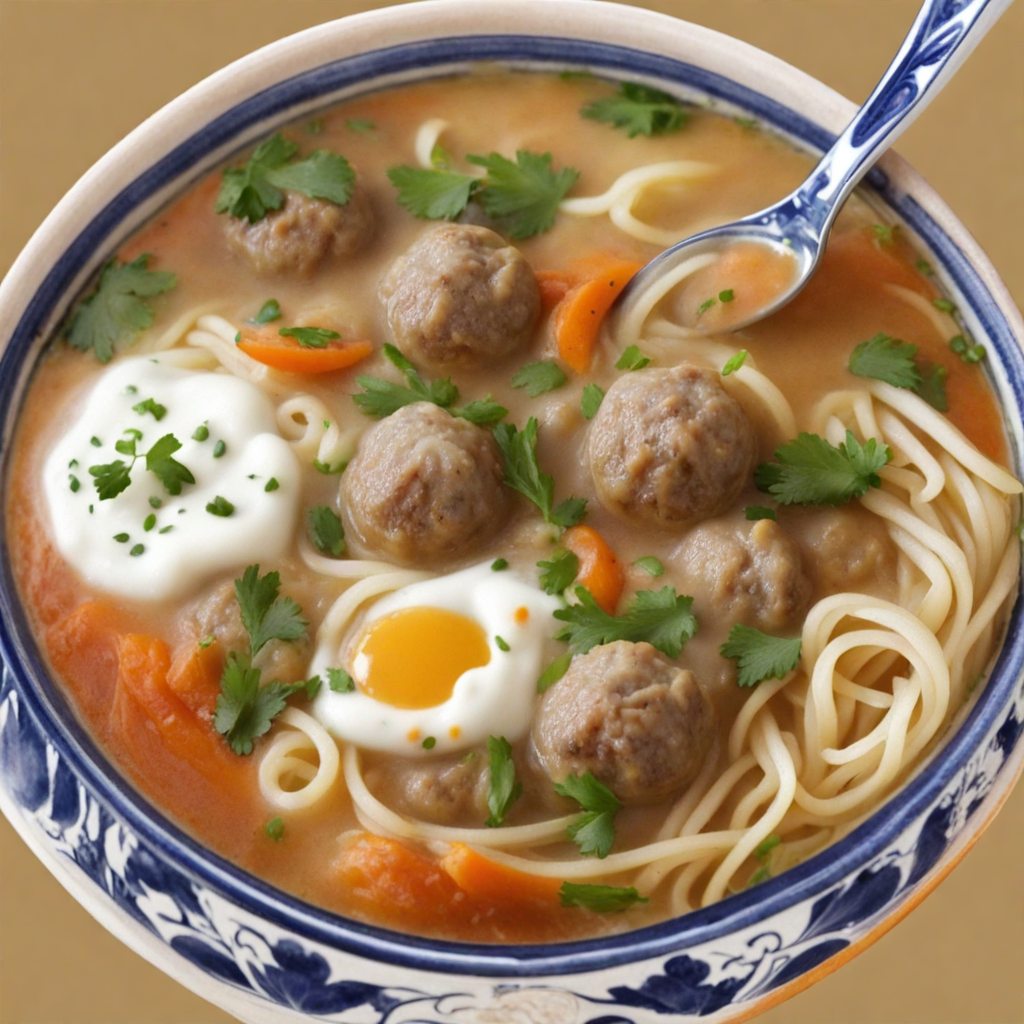Qorma Shalgham
Qorma Shalgham is a hearty Afghan dish that beautifully showcases the rich culinary traditions of Afghanistan. At its core, this dish features tender pieces of meat, typically lamb or beef, which are slow-cooked to perfection. The meat is infused with a blend of aromatic spices, including cumin, coriander, and turmeric, creating a warm and savory profile that tantalizes the taste buds. The dish is further elevated by the addition of shalgham, or turnips, which lend a subtle earthiness and sweetness that complements the robust flavors of the meat. The turnips absorb the spices and juices during the cooking process, resulting in a delightful texture and flavor that is unique to this dish. The preparation of Qorma Shalgham is a labor of love, often involving a long, slow simmer that allows the flavors to meld together beautifully. The dish is typically served with fluffy basmati rice, which acts as a perfect canvas to soak up the rich, fragrant sauce. Garnished with fresh herbs such as cilantro or parsley, Qorma Shalgham is not only a feast for the palate but also a visual delight, showcasing vibrant colors and inviting aromas that draw you in. Each bite offers a harmonious balance of the tender meat, the tender yet slightly tangy turnips, and the aromatic sauce, making it a comforting and satisfying meal. Pairing well with Afghan naan or yogurt, Qorma Shalgham is a dish that invites you to explore the depths of Afghan cuisine. It embodies the essence of communal dining and hospitality, often enjoyed during family gatherings or special occasions. As you savor this dish, you’ll experience the warmth and richness of Afghan flavors, making it a memorable addition to your culinary journey. Whether you are familiar with Afghan food or a newcomer, Qorma Shalgham promises a unique taste experience that is both comforting and exhilarating.
How It Became This Dish
Origins of قورمه شلغم قورمه شلغم, a beloved Afghan dish, traces its roots to the agricultural practices of the region, where turnips (شلغم) are a common crop. The word "قورمه" translates to "stew" in Persian, indicating the method of preparation that involves slow-cooking ingredients to develop rich flavors. This dish likely emerged in the pastoral communities of Afghanistan, where turnips were readily available and could sustain families through harsh winters. The cultivation of turnips in Afghanistan dates back centuries, with evidence suggesting that they were domesticated in Central Asia. The harsh climate and rugged terrain of Afghanistan favored the growth of hardy root vegetables, making turnips a staple in local diets. Its integration into Afghan cuisine reflects the broader agricultural practices of the region, where seasonal and local produce dictates the culinary landscape. \n\n Cultural Significance Culinary traditions in Afghanistan are deeply intertwined with cultural identity, and قورمه شلغم holds a special place in the hearts of many Afghans. This dish is often prepared during significant family gatherings, celebrations, and even during the observance of religious festivals. The preparation and sharing of قورمه شلغم symbolize hospitality and community, as families and friends come together to enjoy this hearty meal. In Afghan culture, food is more than sustenance; it is an expression of love and a way to honor guests. The preparation of قورمه شلغم often becomes a communal activity, with family members gathering to chop vegetables, season the meat, and share stories while cooking. This act of coming together fosters bonds and reinforces cultural ties, making the dish not just a meal but a cherished tradition. \n\n Ingredients and Preparation The primary ingredients of قورمه شلغم include turnips, meat (typically lamb or beef), and a variety of spices such as turmeric, coriander, and cumin. The dish is characterized by its rich, savory flavor, which is achieved through slow cooking. The process usually begins with sautéing onions in oil until golden brown, followed by adding the meat and browning it to enhance the flavor. Once the meat is cooked, diced turnips are added along with spices and water, allowing everything to simmer until the turnips become tender and the flavors meld beautifully. The result is a fragrant stew that is served hot, often accompanied by rice or bread. The simplicity of the ingredients belies the complexity of flavors that develop during the cooking process, making قورمه شلغم a comforting and satisfying dish. \n\n Regional Variations As with many traditional dishes, قورمه شلغم has evolved over time, leading to regional variations that reflect local ingredients and culinary preferences. In some areas of Afghanistan, additional vegetables such as carrots and potatoes may be included, while others might incorporate dried fruits like raisins or apricots for a touch of sweetness. In urban centers like Kabul and Kandahar, chefs experiment with modern cooking techniques and presentation, elevating قورمه شلغم to gourmet status while still honoring its traditional roots. These variations highlight the adaptability of Afghan cuisine and how it has been influenced by different cultures and communities over time. \n\n Historical Context and Influence The historical context of Afghanistan has played a significant role in shaping its culinary traditions, including قورمه شلغم. The Silk Road, which traversed the region, brought with it a mélange of spices, cooking techniques, and culinary ideas from various cultures. This exchange enriched Afghan cuisine, making it a tapestry of flavors that incorporates elements from Persian, Indian, and Central Asian cuisines. Additionally, the impact of various empires, such as the Timurids and the Mughals, introduced new ingredients and cooking methods that influenced how traditional dishes were prepared. As Afghanistan faced political and social upheavals throughout the 20th and 21st centuries, food became a means of preserving identity and heritage in the face of adversity. \n\n Modern-Day Relevance In contemporary Afghanistan, قورمه شلغم continues to be a staple dish, cherished by both the older and younger generations. It is often featured in restaurants and homes, reaffirming its status as a comfort food. With the increased interest in Afghan cuisine globally, the dish has gained recognition beyond its borders, allowing people worldwide to discover and appreciate its unique flavors. Moreover, as Afghan diaspora communities settle in various parts of the world, they bring their culinary traditions with them. قورمه شلغم has found a place in the hearts of Afghan expatriates, serving as a comforting reminder of home and heritage. Cooking this dish becomes a way to connect with their roots and share their culture with others. \n\n Conclusion The journey of قورمه شلغم from its humble origins to its place in the hearts of Afghans today is a testament to the resilience of culinary traditions. As a dish that symbolizes community, hospitality, and cultural identity, قورمه شلغم is not just food; it is a narrative of history, agriculture, and human connection. Its continued relevance in Afghan culture and its growing recognition worldwide highlight the enduring power of food to unite, inspire, and nourish.
You may like
Discover local flavors from Afghanistan







